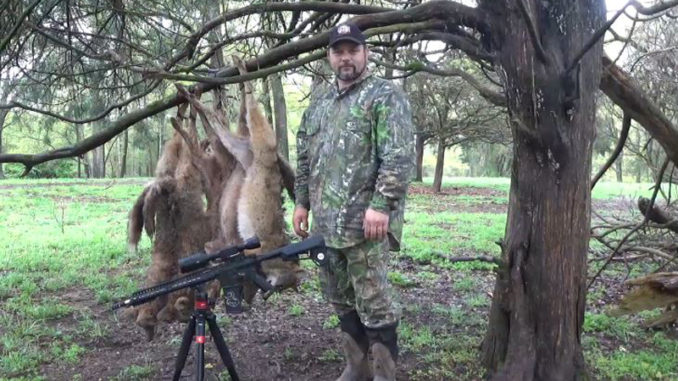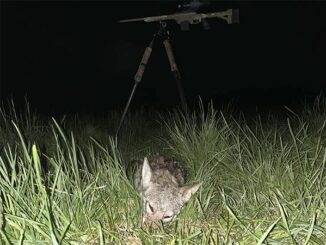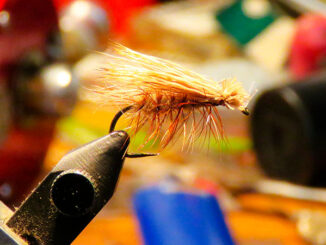
Different calls match the hatch better for certain months
When it comes to coyote hunting, “match the hatch” isn’t a common term. That saying is usually reserved for fly-fishing talk, and it means fishing with artificial flies that look like whatever natural food source is currently hatching. For coyote hunting, it means matching your calls to the calls that are naturally occurring in the woods at the time you’re hunting.
Coyote hunting popularity is growing in the Carolinas. That’s especially true since the states have loosened night hunting laws and allow a wide range of weapon choices. Some hunters are taking advantage and hunting these wily targets all year long. And as with hunting that takes place over 12 months and four seasons, conditions and tactics change throughout the year. Let’s break down how to “match the hatch” when hunting coyotes, no matter what season you’re hunting in.
January, February, March
These months see a lot of breeding activity for coyotes. Coyote hunters trying to match the hatch this time of year have many options. Female whines, whimpers, estrus calls, mating rituals, and actual mating calls will bring coyotes in.
Fighting calls are also a match this time of year. Females fight for territory a lot, and males fight over females.
For best results, don’t stick with just one call. Mix a little bit of everything in there to create a story that is believable to your targeted coyotes. A long female howl or invitational howl, followed by some whimpers and whines tells the story of a receptive female. Estrus calls intensify the story. Now add a mating ritual call, followed by a fight, and you’ve created a believable scenario that most coyotes will come check out. End with a mating sequence and you’ve told a story that as worked often to bring in coyotes.
April, May, June, July
By now, the woods and fields are filled young animals from this year’s bounty. Young birds, rabbits, mice, and deer are plentiful during this period of time. Mother Nature overpopulates the outdoor world during these months so that a number of offspring will survive.
The hatch this time of year moves from coyote calls to calls of distress from prey. Female coyotes have denned, and are now tight-lipped, concealing their den location. Male coyotes feed heavily in feeding areas and respond little to coyote sounds. But they run to the sounds of prey in distress much more often.
In areas with an abundance of rabbits, hunters should focus on rabbit distress calls. And always have a few calls of each prey to change things up. Bird sounds such as woodpeckers and cardinals are always good, even during daylight hours. Birds often sleep near the ground, and coyotes sometimes ambush them as they sleep at night.
If lots of killdeer are around, match the hatch with a killdeer distress call. And once you see any whitetail fawns, move to fawn distress. These stories we are telling to the coyotes seem much more believable when it matches what is naturally going on in their woods.
August, September, October
Make “pup” sounds this time of year to match the hatch. Pup fights, chatter, and distress are all great calls during these months. Pups are beginning to venture out into the hunting fields. So den raid calls, or calls depicting a male coyote attacking a den can be golden. The mother coyote buys the story. And when she comes in to help her young, you’ve got her.
If you use a prey call this time of year, add in pup fights to your electronic caller, allowing two sounds at once. This scenario tells the coyote that the pups are fighting over food, which brings in competition. Pup calls are always good, but this time of year, they really shine. Right now, you have the highest number of coyotes at any time of the year. Use those pup sounds to your advantage, and you’ll harvest higher numbers.
November, December
Prey, pups, and territory disputes are the best sounds to match the hatch for this time of year. Coyotes are eating up for winter while establishing their territory for the upcoming breeding season. Challenge calls will be plentiful. And this year’s pups are vocal by now. Pup howls will be greeted by responses and challenges from older coyotes.
Play on the territorial instincts of coyotes and move toward howls into their established territory. They won’t be able to resist a challenge to their area.
Throughout the year, numerous coyote calls will effectively match the hatch and bring coyotes in. But give the calls mentioned here a try during the appropriate time periods. Watch your harvest numbers and see if they go up. And always pay attention to the natural sounds that you hear as you chase the coyotes, then match the hatch for more success.




Be the first to comment